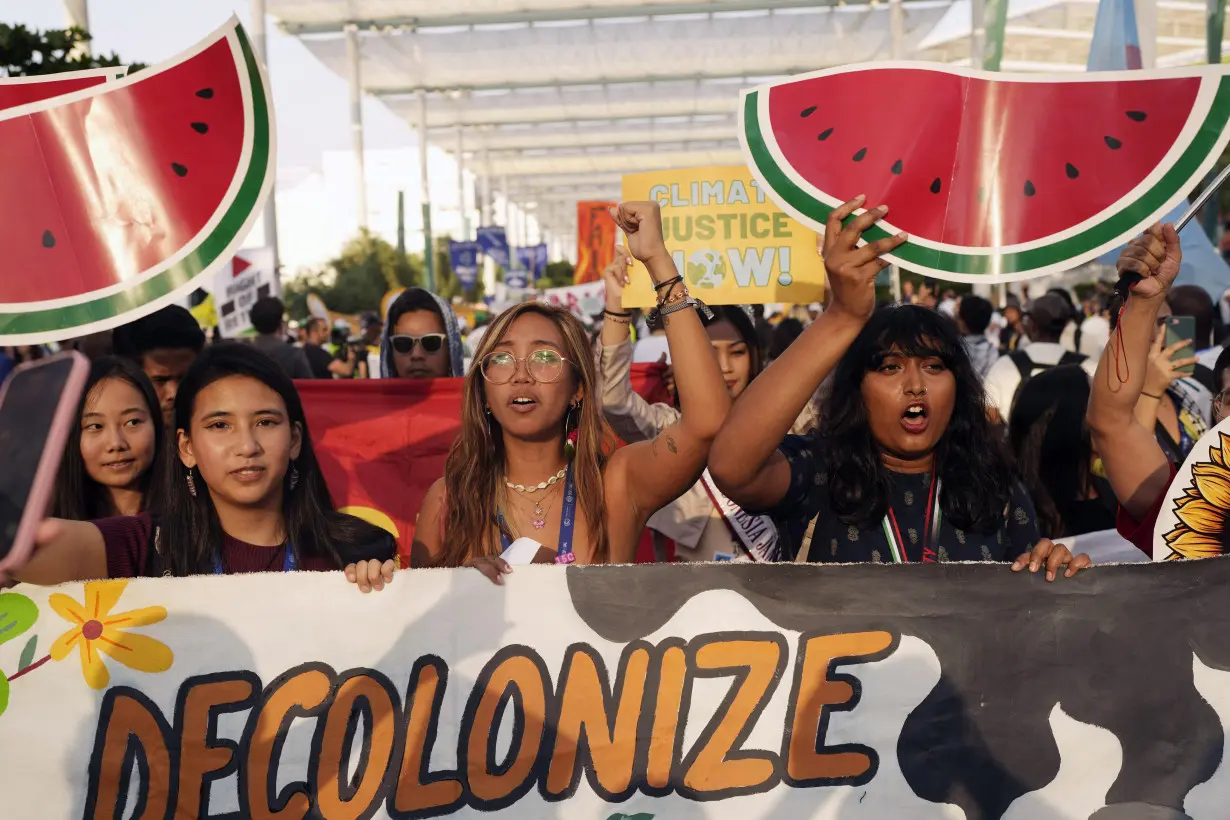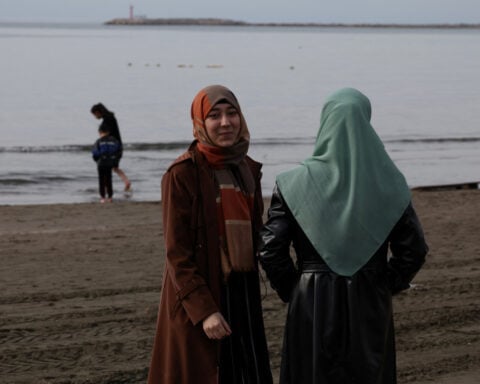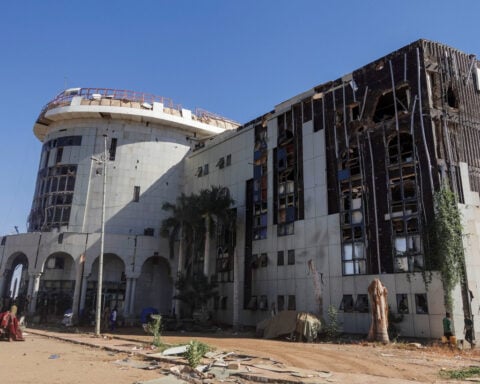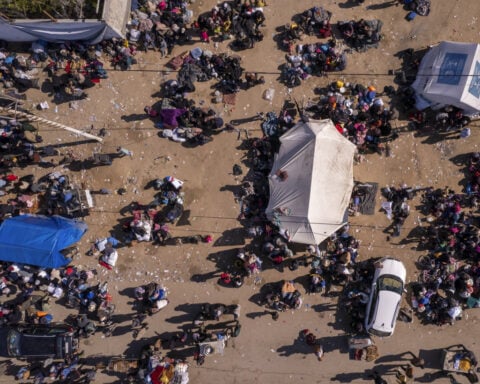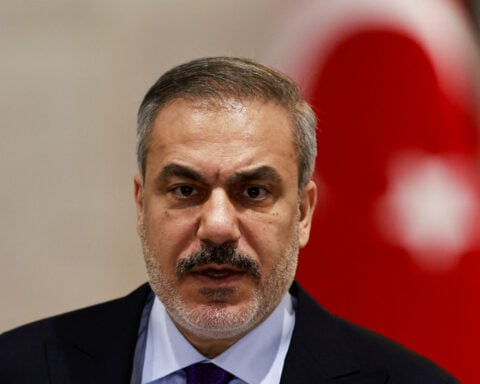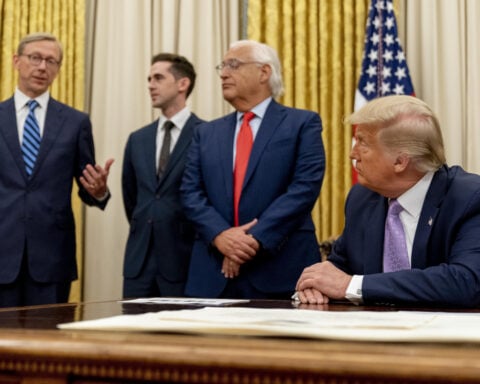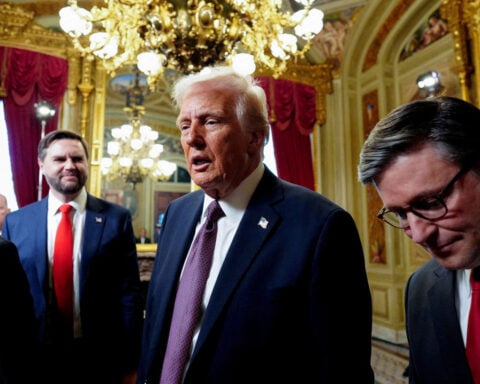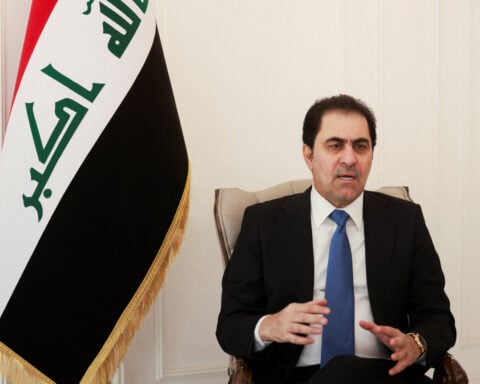Over the past three months, on banners and T-shirts and balloons and social media posts, one piece of imagery has emerged around the world in protests against the Israel-Hamas war: the watermelon.
The colors of sliced watermelon — with red pulp, green-white rind and black seeds — are the same as those on the Palestinian flag. From New York and Tel Aviv to Dubai and Belgrade, the fruit has become a symbol of solidarity, drawing together activists who don't speak the same language or belong to the same culture but share a common cause.
To avoid repressive censorship, Chinese dissidents once pioneered “algospeak,” or creative shorthands that bypass content moderation, recently seen with Winnie the Pooh memes mocking Chinese President Xi Jinping. People around the world began using algospeak to subvert algorithmic biases on TikTok, Instagram and other platforms.
The internet is now teeming with pictorial signs — pixelated images, emoji and other typographical codes — that signal political dissent. The watermelon emoji is the latest example.
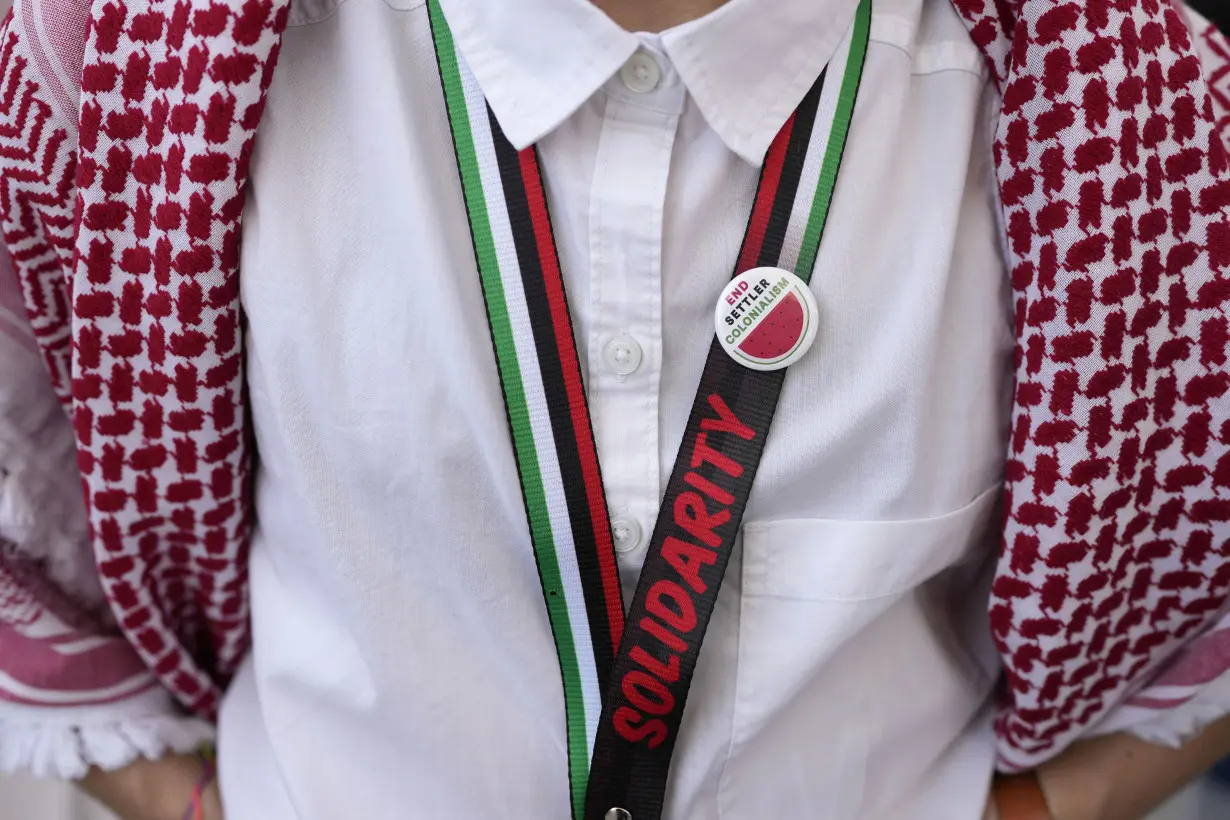
Here's how the watermelon went from being a symbol of protest in the West Bank and Gaza to a global sign of solidarity with Palestinians online.
After the 1967 Mideast war, the Israeli government cracked down on displays of the Palestinian flag in Gaza and the West Bank. In Ramallah in 1980, the military shut down a gallery run by three artists because they showed political art and works in the colors of the Palestinian flag — red, green, black and white.
The trio was later summoned by an Israeli officer. According to artist and exhibit organizer Sliman Mansour, an Israeli officer told him, “It is forbidden to organize an exhibition without permission from the military, and secondly, it is forbidden to paint in the colors of the Palestinian flag.” The officer mentioned a watermelon as one example of art that would violate the army's rules, Mansour told The Associated Press last week.
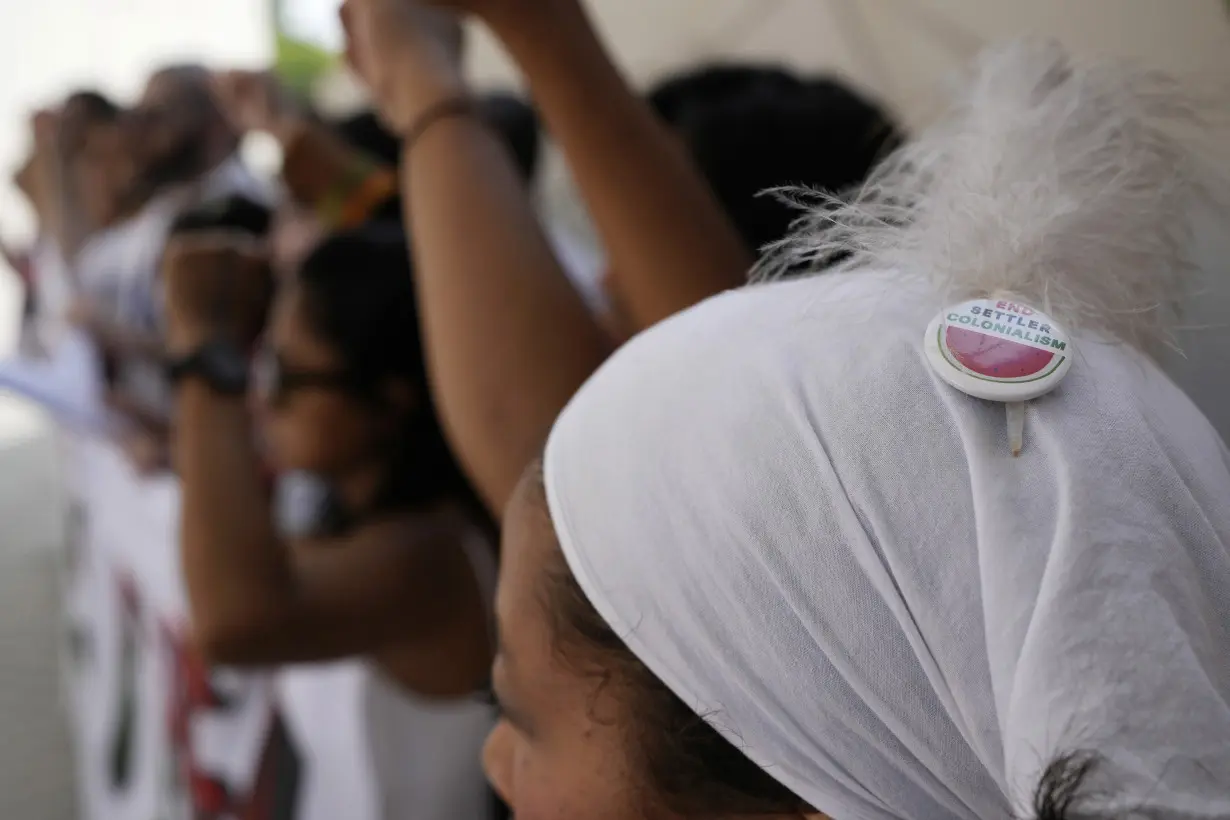
In protest, people began to wave the fruit in public.
“There are stories of young men who defiantly walked the streets with slices of the fruit, risking arrest from Israeli soldiers,” Jerusalem-born author Mahdi Sabbagh wrote. “When I see a watermelon, I think of the unbreakable spirit of our people.”
From the mid-90s, when Israelis and Palestinians reached interim peace deals, until the current nationalist Israeli government took office a year ago, raising the Palestinian flag receded as a major issue. Three decades later, "it became a national symbol” again, Mansour said.
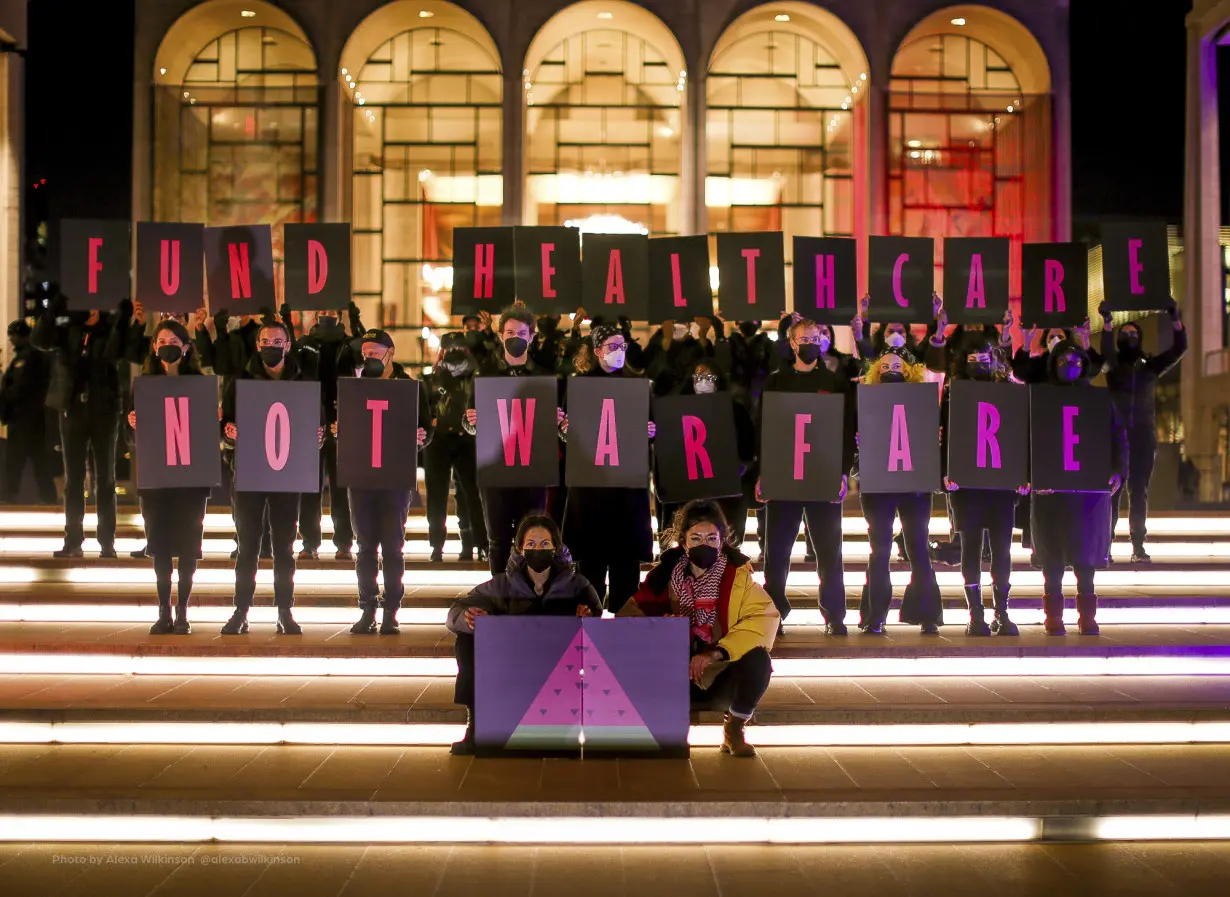
A year ago, Israel’s far-right National Security Minister Itamar Ben-Gvir banned Palestinian flags in public places. This effort was met with fervent opposition. In response, Zazim, an activist group of Arab and Jewish Israelis, plastered taxis in Tel Aviv with large watermelon stickers that read: “This is not a Palestinian flag.”
“Our message to the government is clear," the organization said in a written statement. "We’ll always find a way to bypass any absurd ban and we won’t stop struggling for freedom of expression and democracy — whether this involves the Pride flag or the Palestinian flag.”
For some, embracing the colors of the flag is about striving for freedom and equality rather than necessarily statehood.
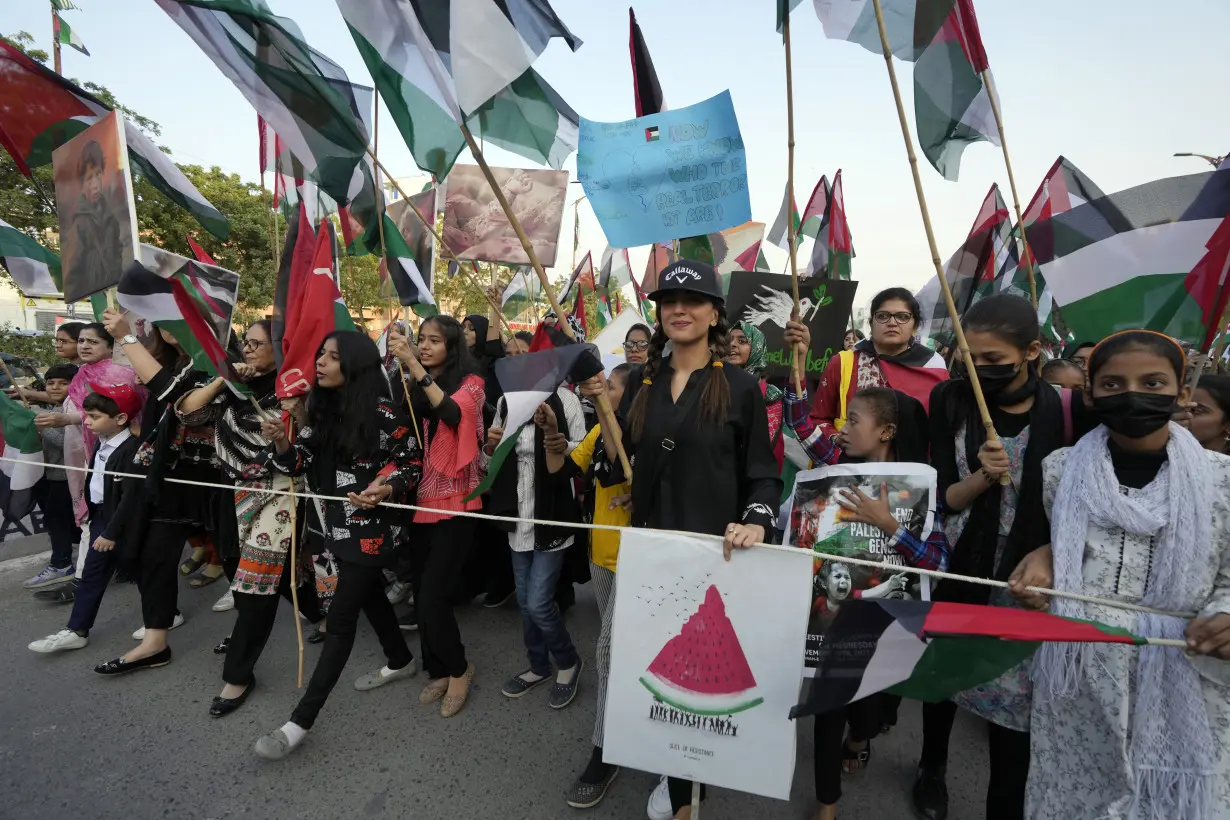
“I’ve never cared for flags or nationalism,” says Mayssoun Sukarieh, an expert in Middle Eastern studies at King’s College London. “But when it comes to Palestine, it’s a flag of a colonized people who never saw independence. And because it has been banned, it becomes more of a symbol of resistance than it is of nationalism.”
Watermelons have long been a staple of food in the region, with some dishes, like a popular salad in southern Gaza, originating with Bedouin Arab tribes.
Increasingly, young activists have adopted the watermelon emoji in calling for a cease-fire in Gaza. Emoji may confuse algorithms that advocates say tech companies deploy to suppress posts with keywords like “Gaza” and even just “Palestinian.”
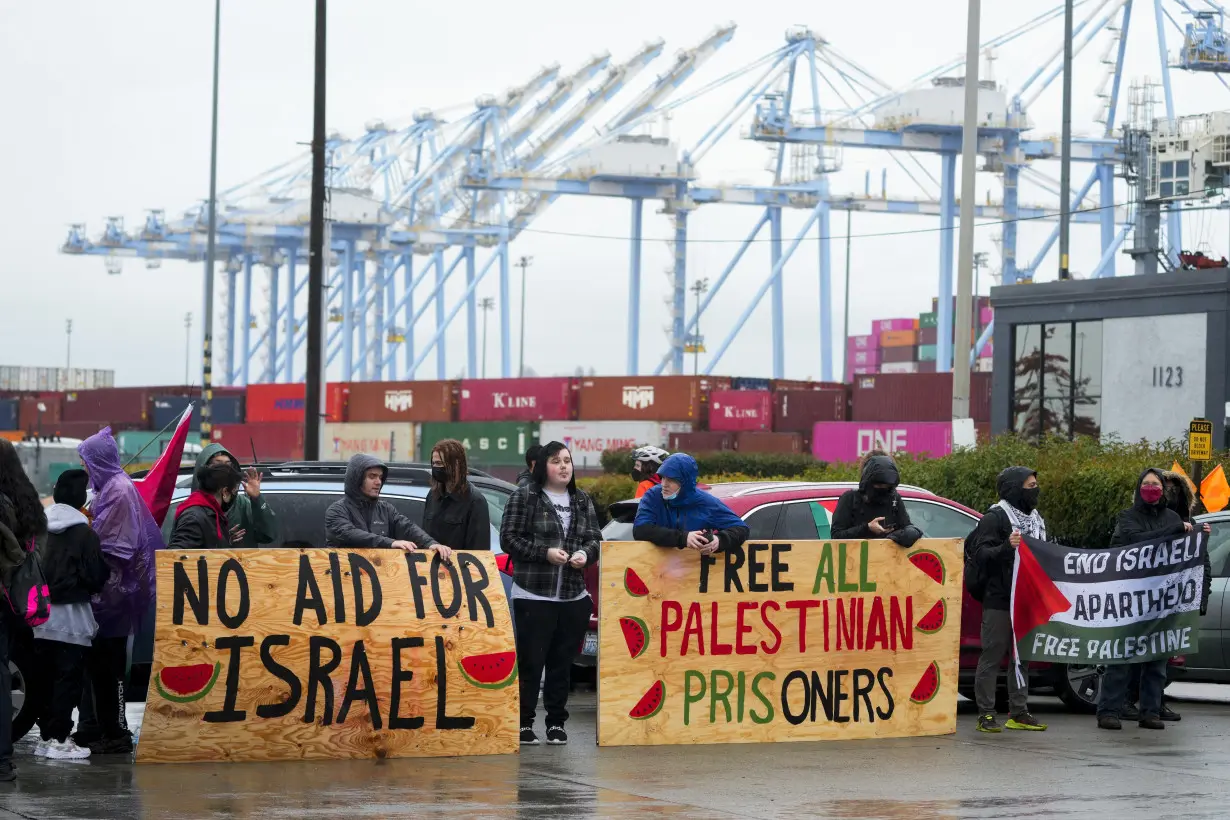
“With the watermelon (emoji), I think this is actually really the first time where I’ve seen it widely used as a stand-in. And that to me marks a notable uptick in censorship of Palestinian content,” says Jillian York, the director for international freedom of expression at the Electronic Frontier Foundation.
The Berlin-based York has analyzed Meta’s policies. While “shadow banning,” or the limited visibility of certain posts, can be difficult to discern, advocacy and nonprofit organizations studying digital rights in the Middle East say they have tracked stark biases, especially on the Meta platforms Facebook and Instagram. Meta hasn't said much directly about this but cites a statement it released in October.
“Censorship is somewhat obvious” on Instagram, York said. In mid-October, people began to notice that if one’s Instagram bio said “Palestinian” in English alongside the Palestinian flag emoji and “Praise be to god” in Arabic, the app translated the text to “Terrorist.” Meta released a public apology.
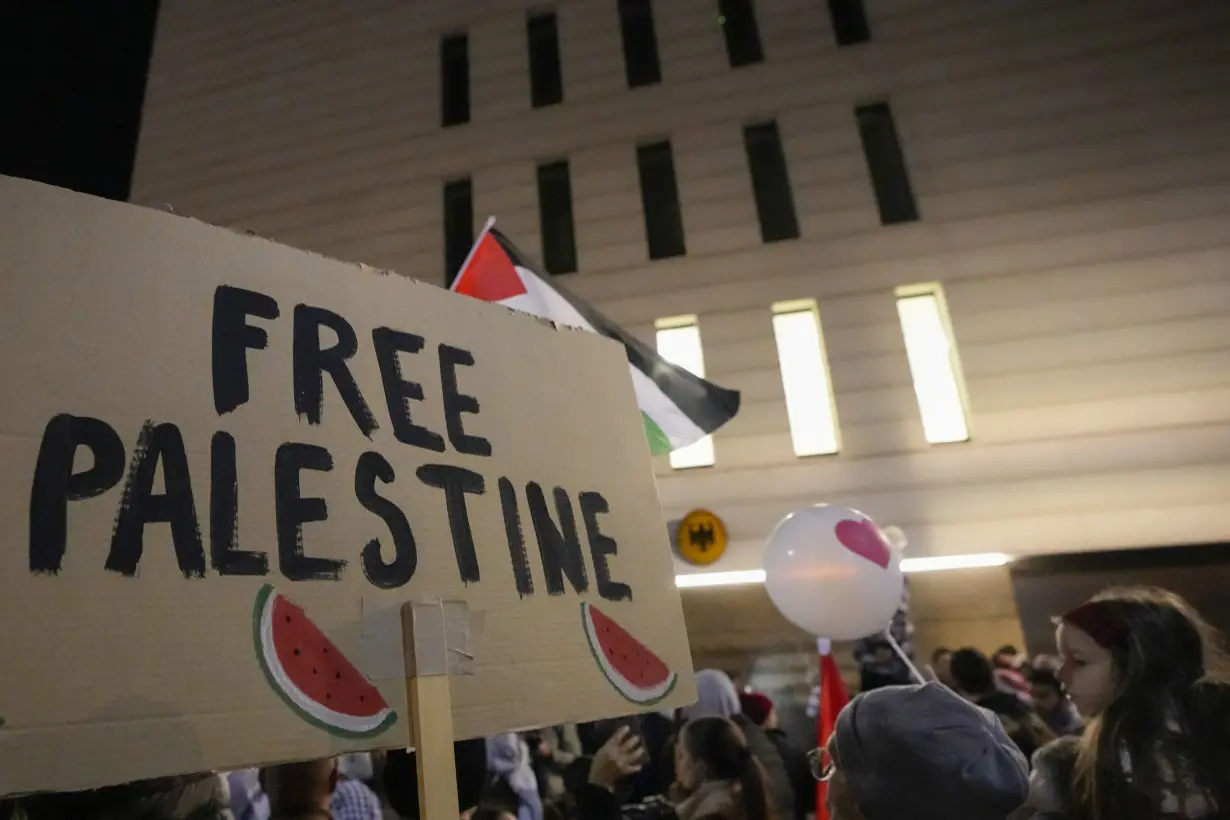
Watermelons are not the only symbol to catch on with activists. Other signs of global Palestinian solidarity include keys, spoons, olives, doves, poppies and the keffiyeh scarf. In November, to connect with the peaceful message of Armistice Day, when many Brits traditionally wear red poppy pins, protesters this year passed out white poppy pins, to commemorate victims of all wars. On the holiday, scores of protesters wearing poppy pins marched across London calling for an end to the war in Gaza.
In the United States, Jewish Voice for Peace amplified watermelon imagery in calling for a cease-fire in Gaza last month. The group held signs in New York in the colors of the Palestinian flag and with triangular watermelons, leveraging the triangle symbol of ACT UP, the historic AIDS activist group.
Jason Rosenberg, a member of both organizations, said, “Our reinvented image shows that our fight for liberation and fight to end the epidemic is intrinsically connected to the Palestinian struggle."
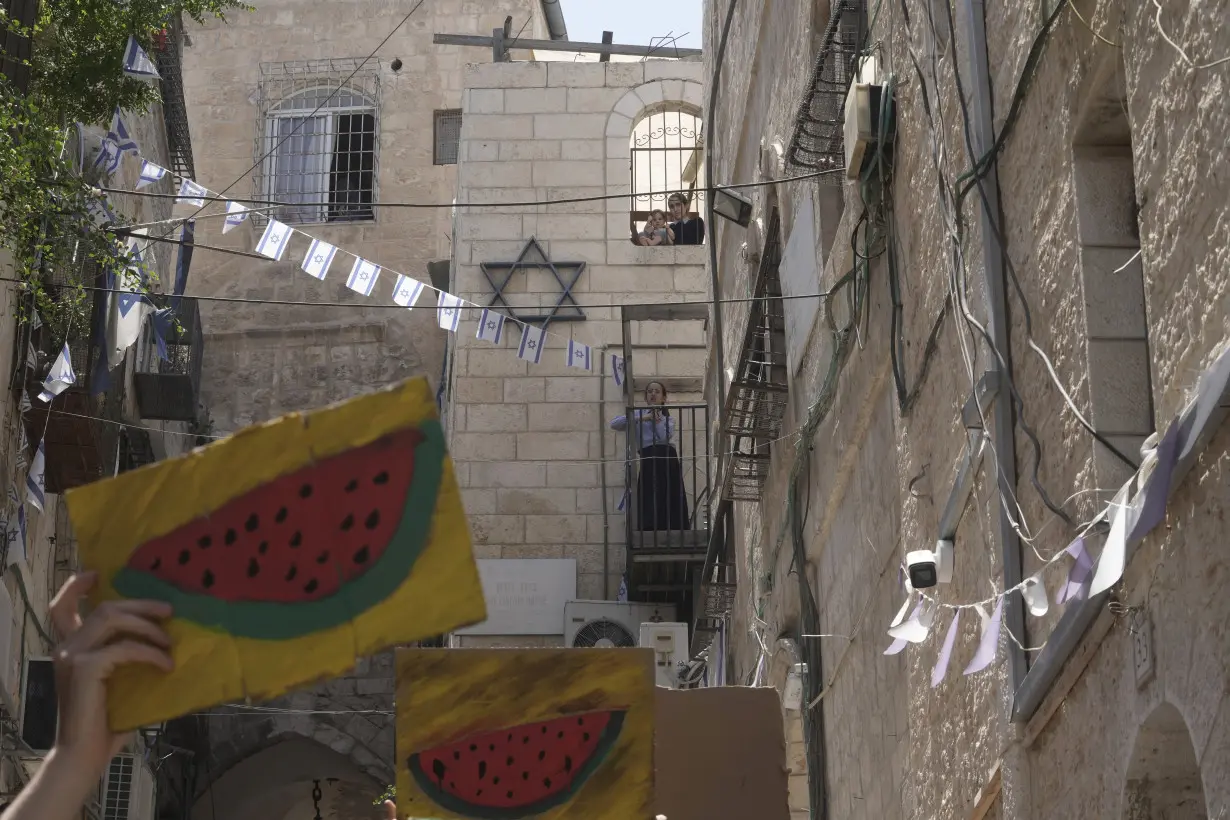
Another reason the watermelon might resonate: It has seeds. There is a saying, often attributed to the Greek poet Dinos Christianopoulos, that is popular among activists: “They wanted to bury us; they didn’t know we were seeds."
“You might be able to smash a watermelon. You might be able to destroy a fruit, but the seed is a little harder to crush,” says Shawn Escarciga, an artist who created the coalition's design. “It’s really powerful that life can come out of something so small and something so resilient — and that it can be spread so, so easily.”
The image of a watermelon punctuated by bold, triangular seeds was held up at the groups' protest at Manhattan's Lincoln Center, and has since proliferated online. That often happens — art emerges from protest movements and then enters the mainstream.
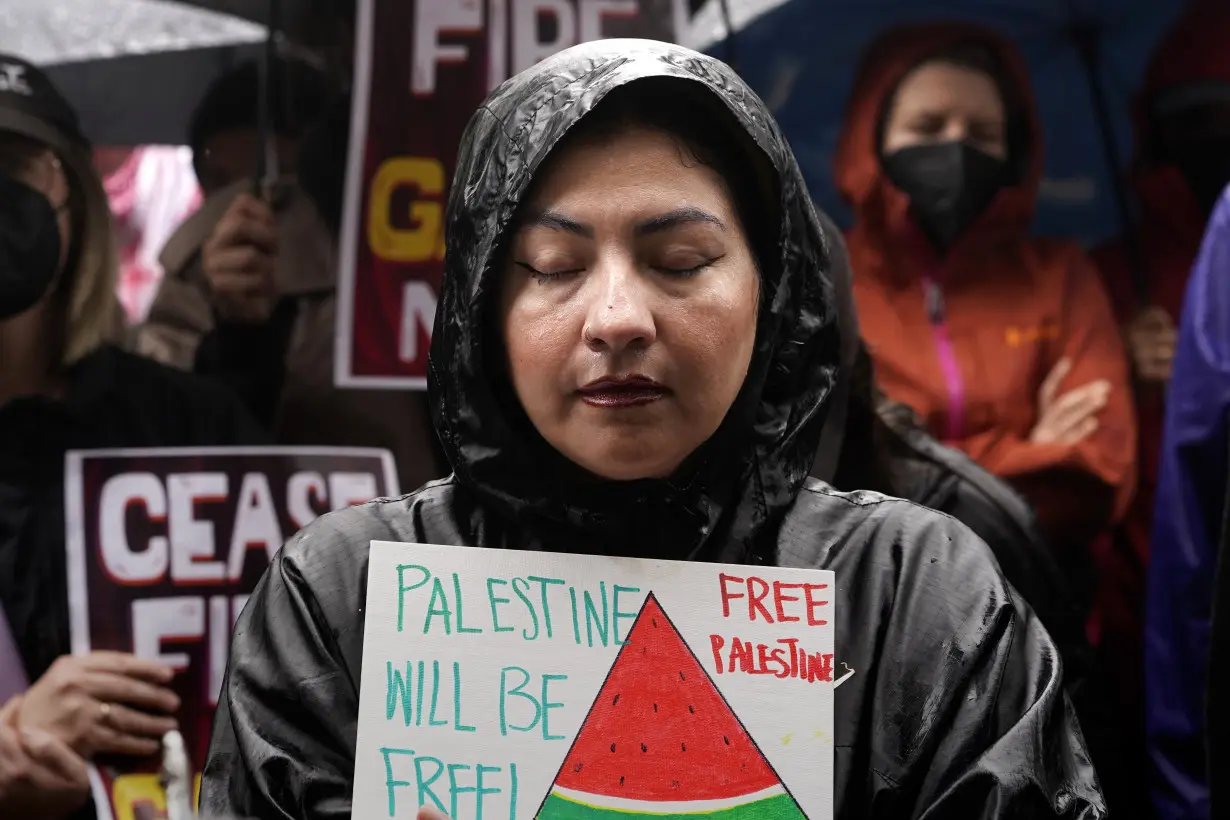
“Artists have always been at the forefront of revolution, resistance, politics, in varying degrees,” Escarciga says. “We’re doing this, using this iconic imagery, because AIDS isn’t over — and war is obviously not over.”
Israel’s air, ground and sea assault in Gaza has killed more than 24,000 people, some 70% of them women and children, according to the Health Ministry in the Hamas-ruled territory. The count does not differentiate between civilians and combatants.
Throughout, activists around the world have continued to call for peace and a permanent cease-fire. Israel says ending the war now, before Hamas is crushed, would give a victory to the militants who attacked southern Israel on Oct. 7 and killed some 1,200 people and took about 250 hostage.
“We’re seeing Palestinian flags being banned, even the emoji online being flagged — and, you know, the word ‘Palestine’ being censored online,” Escarciga said. “But having this image that transcends language, that transcends culture, that transcends algorithms — can really reach people.”
___
Follow AP's coverage of the war at https://apnews.com/hub/israel-hamas-war

 New bid for TikTok from Perplexity AI could give US government 50% stake
New bid for TikTok from Perplexity AI could give US government 50% stake
 Universal Music Group and Spotify strike new agreement
Universal Music Group and Spotify strike new agreement
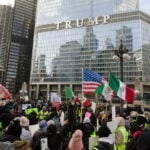 CNN follows ICE team on 2024 arrest operation
CNN follows ICE team on 2024 arrest operation
 Russia says its troops have captured a strategic town in eastern Ukraine
Russia says its troops have captured a strategic town in eastern Ukraine
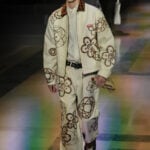 Kenzo finds its groove in a playful, nostalgic turn at Paris Fashion Week
Kenzo finds its groove in a playful, nostalgic turn at Paris Fashion Week
 Trump’s Palestinian refugee idea falls flat with Jordan and confounds a Senate ally
Trump’s Palestinian refugee idea falls flat with Jordan and confounds a Senate ally
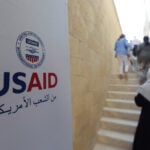 Trump administration memo tells USAID to put "America First" in reviewing foreign aid
Trump administration memo tells USAID to put "America First" in reviewing foreign aid
 Kim Caldwell will coach her Lady Vols vs South Carolina week after giving birth
Kim Caldwell will coach her Lady Vols vs South Carolina week after giving birth
 Lauren Betts scores a career-high 33 points as No. 1 UCLA handles No. 8 Maryland, 82-67
Lauren Betts scores a career-high 33 points as No. 1 UCLA handles No. 8 Maryland, 82-67
